If you’ve enjoyed the arts in any form in South Australia, you probably have Marjorie Fitz-Gerald to thank for the experience.
The woman who helped build SA’s arts reputation
Behind almost every major arts decision made in this state, Marjorie Fitz-Gerald has been a guiding voice and helping hand.
Celebrating her 90th birthday in April, the inimitable Marjorie was pivotal in the early decades of Adelaide’s arts industry. She may not have been the one up on stage, but she has brought her influence to bear behind the scenes for the past 70 years.
In the early 1950s, when a young, charismatic up-and-coming politician’s views piqued her interest, Marjorie began spruiking the talents of the future premier. Don Dunstan would go on to revolutionise the state’s arts industry.
When Adelaide was crying out for a fun, informal arts program, she partnered with Frank Ford – widely known as the father of the Adelaide Fringe – and became the “mother of the Fringe” when it opened in 1960.
Then, when there was talk of the Festival Centre being built in North Adelaide in the early 1970s, Marjorie suggested the plot of land by the river instead. And there it now stands.
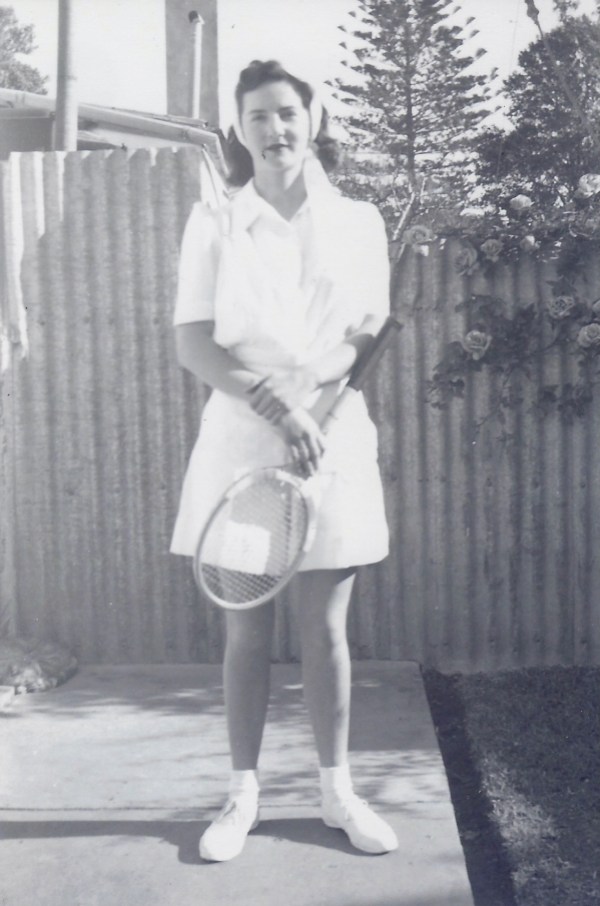
Later, when the Festival Theatre lay dormant in the cooler months, Frank came to Marjorie with his Cabaret Festival proposal for the state government. Marjorie told him to put another $10,000 on his ask and it came to be in 2001.
Far away from the velvet seats and red carpets of Adelaide’s theatres, Marjorie grew up in a modest home in Semaphore as the eighth of 12 children.
Her parents Harry and Caroline – or Harry and Carrie – migrated from the UK. Harry was an engineer from Kent, while Carrie was Cockney through and through. Harry moved to Australia first and promised to bring his wife and their three-and-a-half children over once he’d saved enough.
When Harry left, Carrie’s mother told her it was the last she’d see of him. However, he dutifully sent her money from his wages and eventually, she was able to join him in Adelaide.
For her first months of life, Marjorie slept in a pulled-out drawer in the dining room.
“With a large family, you waited your turn,” Marjorie says.
“If you needed your shoes mended and it wasn’t your turn, you put a bit of Weet-Bix cardboard in your soles.
“That only made you a stronger person; I’m not complaining.”
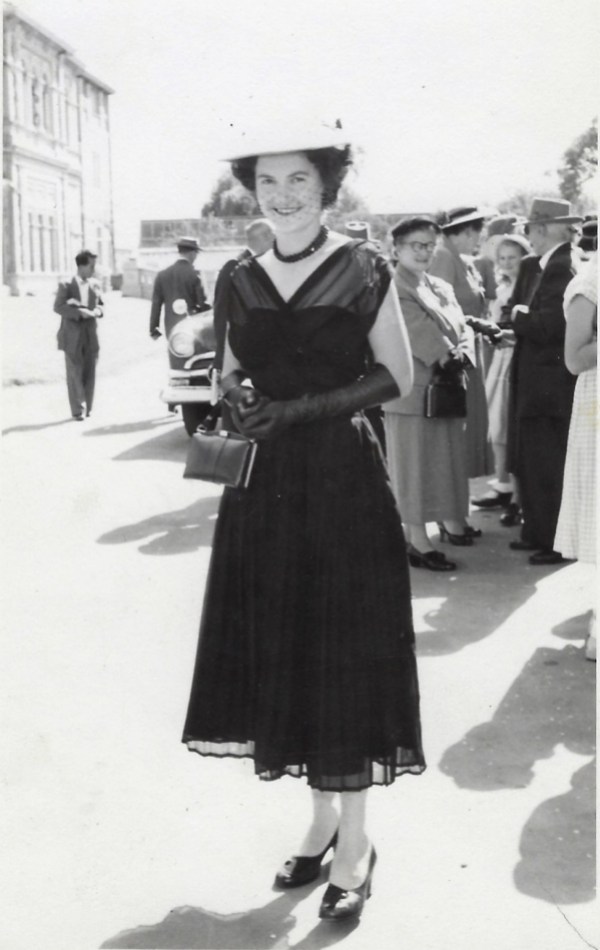
At first, Harry could only find work as a blacksmith, but he soon had his chance to engineer again and designed the gates of the River Torrens weir, which in turn created Elder Park. He then moved to General Motors, where he designed the layout of Holden’s Elizabeth plant.
As soon as Harry would walk through the front door after work each day, Carrie would order him to take the children out from under her feet. He’d usher them all into the dining room, wind up the gramophone and fill their ears with whichever opera he’d chosen.
“He’d say, ‘Before we put it on, I want you to listen carefully. Enrico Caruso is going to sing a song. The problem is, he’s fallen in love with his best friend’s wife and I want you to hear the anguish.’ We’d sit there with our mouths open and tears streaming down.”
Carrie’s musical influence was vastly different, but no less important. To this day, Marjorie often breaks out into the Cockney music hall tunes her mother would sing while making dinner.
As a student at Port Adelaide Girls Technical High School, an excursion to the Art Gallery of South Australia played a vital part in her arts education.
Each student on the trip was permitted to pick out a painting that would hang in the school for the next 12 months.
The one a young Marjorie selected? “I’ll never forget it; it was a family sitting in a box in a theatre. There was the grandma and grandpa with their eyes closed, listening to the music, and the mother and father with their eyes half on the stage and half on the children – a boy and a girl with their arms folded across the edge of the box, gazing in wonder. And there it was, it was meant to be,” Marjorie says.
Later that year, at 13 years old, she visited the Tivoli Theatre and watched The Mikado. “It was just magic, so I was sold forevermore on theatre.”

Almost eight decades later, 2022 is a big year for Marjorie Fitz-Gerald as she marks a double milestone.
Not only has she recently turned 90, but she is also celebrating 50 years of youth performing arts organisation, Carclew, which she was instrumental in getting off the ground. Sitting in Carclew’s boardroom – which is named after her – Marjorie recalls the origin story. She’d gone along to see television and theatre personality Maree Tomasetti’s performing arts workshop with children.
“They were typical kids you couldn’t control, but she had them eating out of her hands and doing what she wanted. It was really marvellous,” Marjorie says.
“I said to her afterwards, ‘You’re so good with them, you should start a youth performing arts centre.’ She said to me, ‘I haven’t got time; you do it.’”
A fundraising carnival was arranged, and a lifetime of Marjorie asking for donations for the betterment of the arts community began. She asked producers to contribute flour, sugar and butter, and then went on television to invite people to make cakes for the carnival. Volunteers came to her home, she measured out the ingredients for them, and they returned later with a cake. There were trestle tables all along her hallway, piled high with cakes and biscuits people had turned up in droves to bake for the cause. Her own children iced the cakes when they arrived.
“I didn’t go to bed for four nights,” Marjorie recalls.
The big day finally arrived and the grounds of Carclew were packed with people. Premier Don Dunstan opened the festivities.
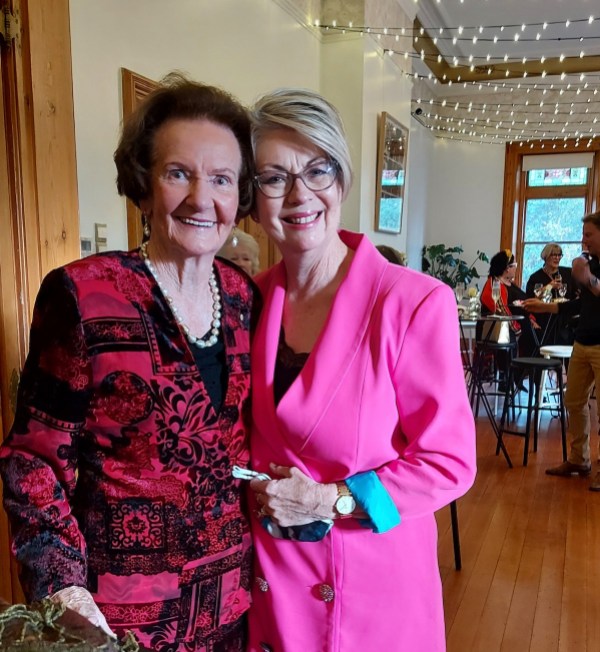
“We nearly had to abseil him in because there were so many people. He was standing on the step out there and said, ‘Marjorie, if this many people are interested in a youth performing arts centre, you can have Carclew’.”
At the time, the building was dirty and dilapidated. The state government had purchased it from the Bonython family for $3 million and it was going to be demolished for a concert hall.
“They had that discussion under the vines in my back yard and I said, ‘It’s a stupid place for a concert hall because you’re right in a residential area. Where are you going to park everybody?’”
The carnival had raised $10,000 and Marjorie sat on the money until there was a responsible board to spend it. Marjorie herself was made the Premier’s appointment on the board. In the meantime, she helped clean up the place by hand.
There had been a lot of looting; stained glass, fireplaces and newel posts went missing. Marjorie put an ad in the paper asking people to return the property and she’d look the other way. They got most of it back, except the stained glass.
From the beginning, Marjorie has maintained that Carclew is not about creating careers in the arts – although it’s a great outcome – the goal was to foster confidence and creativity in young people. She also wanted underprivileged children to know their aspirations were worthy.
“I wanted to bring them here and develop their interest in their self-worth,” Marjorie says.
“Mostly, I wanted to allow them to release their inhibitions.”
It may not have been the core goal, but the list of arts industry professionals who gained confidence through Carclew as young people is impressive. Adelaide Festival co-artistic director Rachel Healy experienced Marjorie’s impact firsthand as a child attending workshops and went on to her first professional job as assistant editor of Carclew’s Lowdown magazine.
Sitting beside her mother in the boardroom, Marjorie’s daughter Catherine elaborates on the need for creativity in the younger years to promote self-worth.
“Programs such as Carclew’s are so important because they ensure young people have a voice,” says Catherine.
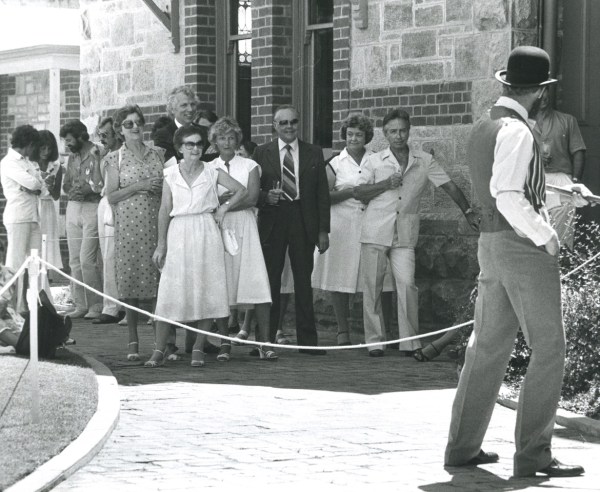
“If they don’t have a voice, how can they be involved in politics or their community? How can they raise their own children or be employed, if they aren’t confident in using their voice? Carclew was originally about the arts, yes, but it was also about children and the skills they needed to live their lives well.”
While Marjorie’s involvement with Carclew has slowed – although she’s always ready, should they need her as patron – the original values she instilled remain. There are still community events, a broad education program for students and mentorship for early-career artists.
The same year Marjorie chaired the steering committee to establish Carclew, she joined the Town of St Peters, and spent 14 years there, working her way up to Mayor. Over the years, Marjorie has also worn a number of other important hats. There was the Australian Metric Conversion board, duties as a Justice of the Peace, and with the SA Trades Advisory Council and the Adelaide City Ballet. She was the inaugural chair of the South Australian Country Arts Trust and chair of the Independent Arts Foundation. She was a member of the Adelaide Festival Centre Foundation and remains patron of the bequest program.
Marjorie jokes that she has bumps on her head from hitting the glass ceiling, but she really was walking into boardrooms that no other woman had been in before.
“There was only me as a woman; the rest were men,” Marjorie says.
“When I went into council, they were all men. They were like a club. It was extremely difficult in some senses, but I didn’t let it bother me.”
In typical unflappable style, when a young man in Canberra asked Marjorie if she was the token woman on the Metric Conversion Board, she replied with, “I’ll let my actions speak for me.”
More astonishing even than her list of achievements is that Marjorie has a 100 per cent attendance rate on all meetings. She’s there every time, highlighted minutes in hand, with her comments on how to make things happen.
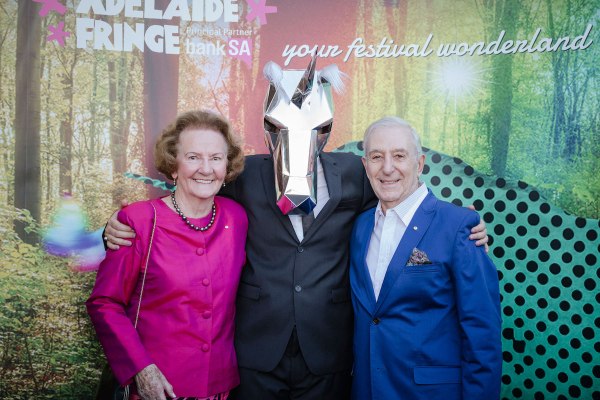
The boards she has sat on might be diverse, but Marjorie’s greatest interest has always been in the arts. Her partner in crime within that world, from the instant they met, was Frank Ford.
“Frank extended an invite to the movers and shakers of the arts industry, and I got an invite,” Marjorie says.
“I went over and knocked on the door. He opened it – and this is the absolute truth, I’d never met the man before in my life – instantly when he opened the door, I looked at him and said, ‘You’re my brother from a former life.’
“I just gave him a great big hug; I couldn’t believe it. I reached out to him and I just knew that’s who he was.”
From that very night, Frank and Marjorie remained pseudosiblings for six decades, in which they travelled the globe, harnessing the fun and frivolity of festivals and events from overseas to bring back to Adelaide. There were candle festivals, umbrella festivals, the opera in Verona and an unforgettable trip to Rio for Carnivale.
Marjorie was there at the very beginnings of Fringe, hosting fundraising dinners and extracting the word “yes” from anyone she needed something from. When Frank stood down as chair of the Fringe in 1984, Marjorie stepped up.
When Marjorie was Fringe chair, she was given $40,000 to deliver a festival. Fast forward to the present day when it’s now pulling $50 million into the state.
“As we have other industries in South Australia, we need to view the arts as an industry,” she says.
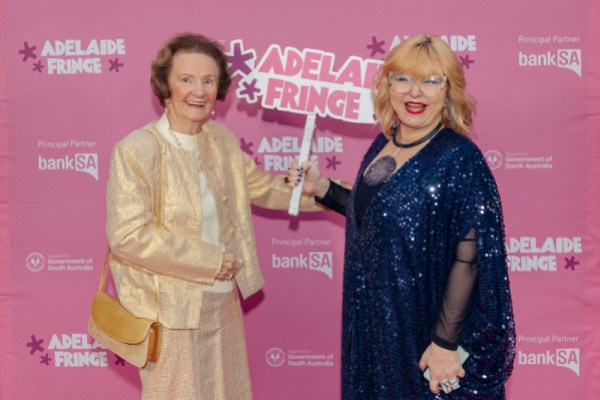
“We’ve got to make sure it’s called an arts industry because then it demands a space on every budget with every government in every state.”
Marjorie praises the announcement of an extra $2 million for Fringe each year for four years, but says, in the scheme of things, it’s just the tip of the iceberg.
“We’re starting to get a foot hold, but that’s small money. It’s only a start.”
At home, Marjorie’s hallway is hung with certificates and her sitting room shelves hold trophies. But they’re interspersed with family photos – she took on her roles and responsibilities with five children at home. All professional hats would come off her head when she walked through the gate each evening.
Each of her children, now ranging from 59 to 69 years old, has gone on to do admirable things. Mark has been busy of late as the Manager Customer Services at SA Pathology, although he’s also a musician and photographer. Leslie is a specialist for children with learning difficulties. Lewis is a lecturer in Armidale, a NIDA graduate, writer, director, actor and producer. Catherine is the artist and Rosemary is a senior barrister for the Crown here in Adelaide.
Catherine says, if she wanted a quiet moment with her mother, she’d find her outside and help with gardening tasks. Gardening is still a love of Marjorie’s and, in the warmer months, her Heathpool patch is filled with lilies and roses, timed perfectly for the family to enjoy at Christmas.
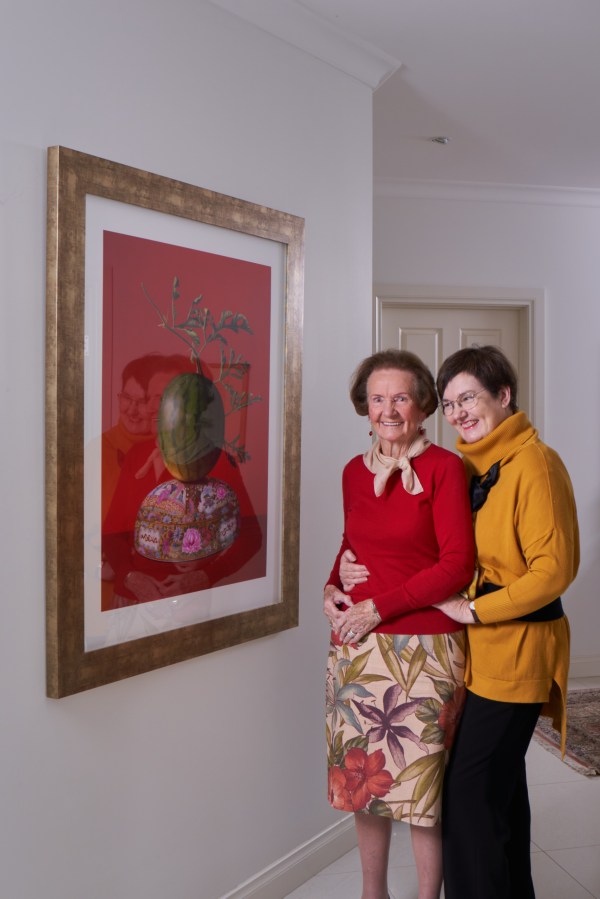
To a recent 50th anniversary celebration for Carclew, Marjorie wore a skirt and jacket set she made herself – fittingly, with 50-year-old Merino wool fabric made in Italy. She shows off the perfectly-stitched patterned fabric on Bertha, her dressmaker’s model.
Marjorie spends a lot of time with Bertha, still making most of her own clothes, including dazzling outfits for every Fringe opening. She plans to one day auction off the glitzy garments to benefit the artists’ fund.
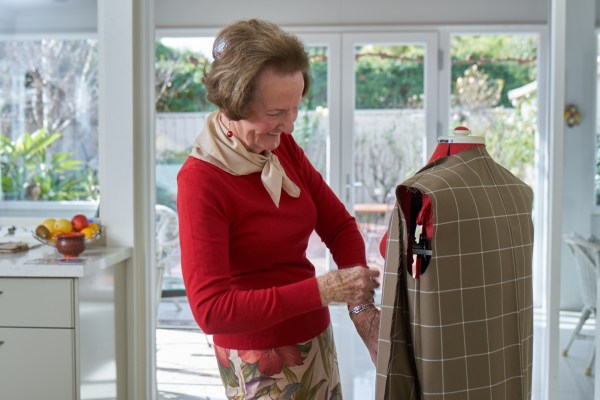
At the moment, Marjorie is adjusting to a different pace of life.
She’s still an avid theatregoer and steps up whenever her beloved causes need her. These days it’s now just her at home; her partner of a decade, Marshall Steer, passed away late last year.
In Marjorie’s life, there have been three partners over the nine decades. She married Brian Fitz-Gerald, her children’s father, but the marriage dissolved during a time when Marjorie was suffering a personal breakdown.
“I knew Mum was in trouble when she stopped singing,” Catherine says.
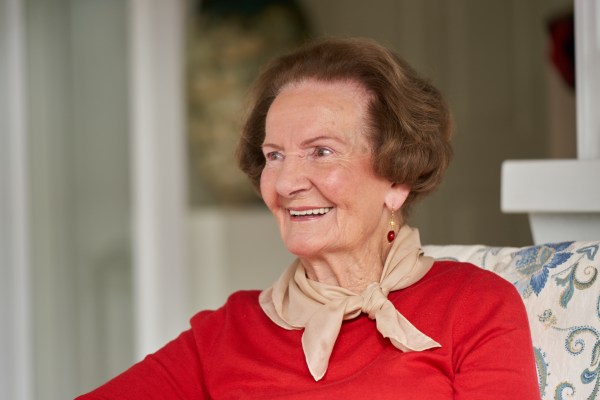
Then, she met Roy Taylor, the man she describes as her soulmate. He was the person who brought song back into her life after the sadness had left her quiet. They had nearly 20 wonderful years together before he died.
These days, keeping up with all the kids and grandchildren keeps her busy, so too do her weekly beach walks. She can even be found in the water on icy winter mornings. And of course, she’s a voracious reader, never losing her lifelong passion to learn.
As the pale winter light filters into Marjorie’s sun room, she takes her life story right back to the start. It always comes back to that gramophone in the dining room at Semaphore.
As her mind casts back more than 70 years, she transforms into that little girl crooning Bing Crosby, a life of the arts ahead of her.
“I let my heart fall into careless hands.”
This article first appeared in the August 2022 issue of SALIFE magazine.



